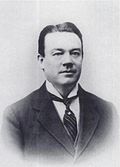| |||||||||||||||||||||||||||||||||||||||||||||||||
All 52 seats to the House of Commons of Northern Ireland 27 seats were needed for a majority | |||||||||||||||||||||||||||||||||||||||||||||||||
|---|---|---|---|---|---|---|---|---|---|---|---|---|---|---|---|---|---|---|---|---|---|---|---|---|---|---|---|---|---|---|---|---|---|---|---|---|---|---|---|---|---|---|---|---|---|---|---|---|---|
| |||||||||||||||||||||||||||||||||||||||||||||||||
 Election results by constituency | |||||||||||||||||||||||||||||||||||||||||||||||||
| |||||||||||||||||||||||||||||||||||||||||||||||||
| (1921–72) |
The 1929 Northern Ireland general election was held on 22 May 1929. Like all previous elections to the Parliament of Northern Ireland, it produced a large majority for the Ulster Unionist Party. It was the first held after the abolition of proportional representation and the redrawing of electoral boundaries to create single-seat constituencies. Though it had been argued this was done with the intent of gerrymandering, this has been considered unlikely as the Unionists already had a solid majority at the parliamentary level. [1] However, the opposite was more accurate at local level. [2] As with the rest of the United Kingdom, this has made it more difficult for independent and minor party candidates like the Northern Ireland Labour Party to win seats, as was the intent of the abolition of proportional representation was for the UUP to control the Unionist vote. [2]
Contents
- Results
- Votes summary
- Seats summary
- Contested seats
- Uncontested seats
- Old Map
- Footnotes
- Notes
- References
22 MPs (42%), mostly Ulster Unionists, were elected unopposed without any votes being cast. This began a trend which would continue for decades - until 1969, at least 20 MPs in every Northern Ireland general election would be elected unopposed. [2]



